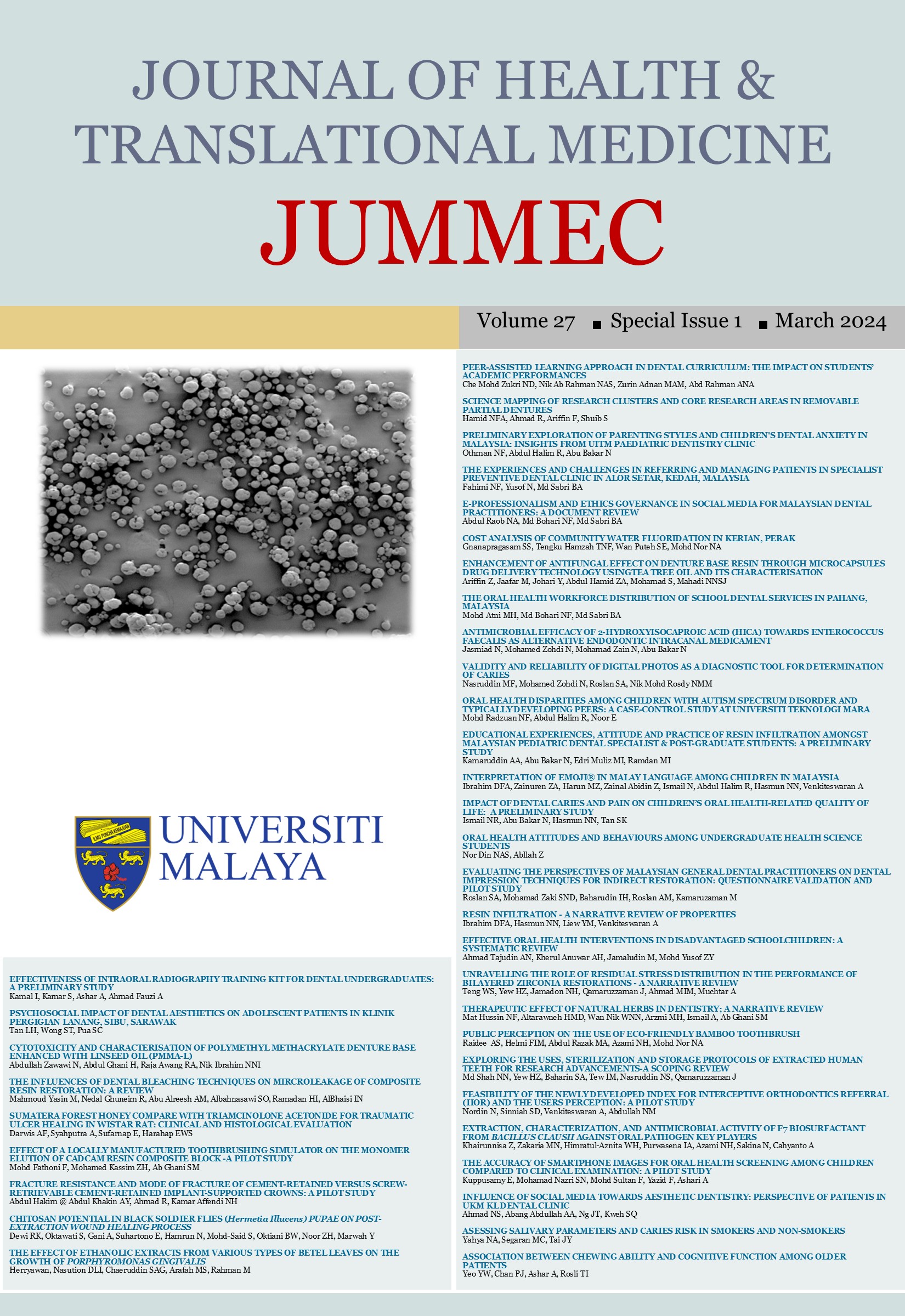EXTRACTION, CHARACTERIZATION, AND ANTIMICROBIAL ACTIVITY OF F7 BIOSURFACTANT FROM BACILLUS CLAUSII AGAINST ORAL PATHOGEN KEY PLAYERS
Received 2024-02-21; Accepted 2024-03-05; Published 2024-03-25
DOI:
https://doi.org/10.22452/jummec.sp2024no1.24Abstract
Introduction: Biosurfactants are surface-active molecules produced by various microorganisms. It holds exceptional properties, including its capacity to lower surface tension, antiadhesive activity, non-toxicity, biodegradability, and antimicrobial activity.
Objectives: This study investigated the production, characteristics, and antimicrobial potential of biosurfactants extracted from Bacillus clausii, isolated from a crude oil sample obtained from a natural oil reservoir.
Methods: Biosurfactant was extracted using the chloroform-methanol extraction method. Characterizations were assessed through Fourier-Transform Infrared Spectroscopy (FTIR), determination of surface tension, Critical Micelle Concentration (CMC), and emulsification index. Antimicrobial activity was determined by the Minimum Inhibitory Concentration (MIC) evaluation against Streptococcus mutans ATCC 25175, Enterococcus faecalis ATCC 24212, and Candida albicans ATCC 14503 using the microdilution method.
Results: The biosurfactant extraction yielded at 1.6 mg mL-1, and was labelled as F7 biosurfactant. FTIR analysis revealed that the F7 biosurfactant belonged to the lipopeptide group, as evidenced by the presence of an aliphatic chain (CH3 and CH2). It exhibited a surface tension of 12.0 mN m-1, a CMC of 157.5 mg L-1, and an emulsification index of 56.5%. The MIC for each tested organism was 0.2 mg/mL-1, 0.4 mg/mL-1, and 0.8 mg/mL-1 with inhibition percentages of 3.20%, 4.03%, and 7.87% against S. mutans, E. faecalis, and C. albicans, respectively.
Conclusions: The antimicrobial activities of the F7 biosurfactant demonstrated dose-dependent. These findings suggest that increasing the F7 biosurfactant concentration could lead to a more effective antimicrobial effect, making it a potential antimicrobial agent for oral applications.
Downloads
Downloads
Published
Issue
Section
License
All authors agree that the article, if editorially accepted for publication, shall be licensed under the Creative Commons Attribution License 4.0 to allow others to freely access, copy and use research provided the author is correctly attributed, unless otherwise stated. All articles are available online without charge or other barriers to access. However, anyone wishing to reproduce large quantities of an article (250+) should inform the publisher. Any opinion expressed in the articles are those of the authors and do not reflect that of the University of Malaya, 50603 Kuala Lumpur, Malaysia.


